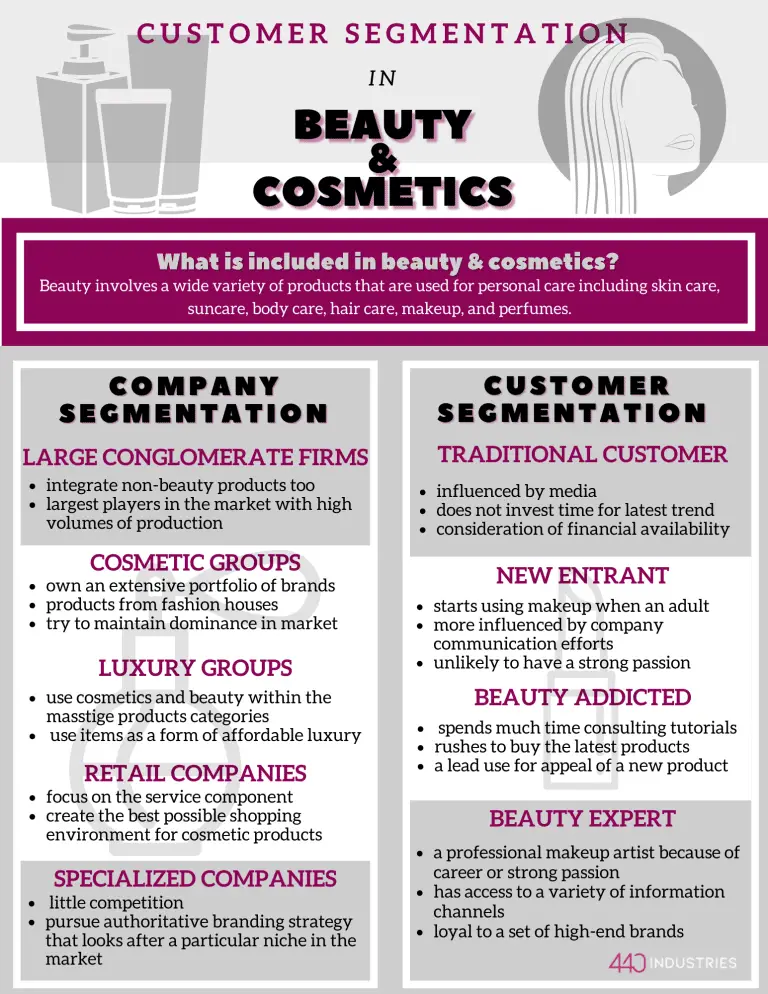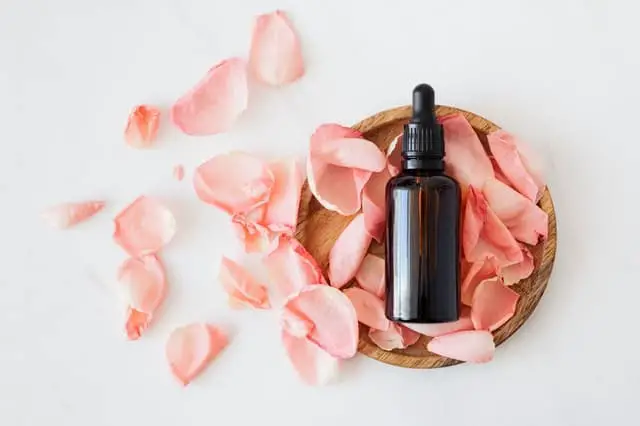Introduction
When thinking about the fashion industry, we can’t help but acknowledge its complexity and size. However, there is one particular industry standing out because of its uniqueness: beauty and cosmetics. Beauty and cosmetics require brand managers and product managers to take into account 2 highly distinctive features of beauty products in terms of:
- Their uniqueness as a product category. Beauty and cosmetics oftentimes fall into the masstige segment of a fashion product portfolio.
- Their business model. Which is usually based on licensing agreements. We discuss this topic more in-depth in this article.
All in all, beauty is the word that has been used to identify a very wide variety of products that are used for personal care including skin care, suncare, body care, hair care, makeup, and perfumes. For marketers, it is, therefore, necessary to identify some product-specific segmentation criteria when it comes to analyzing the beauty product consumer and the beauty product business.
In this post, focusing on the beauty sector we are going to discuss the following topics:
- Customer Segmentation in the Beauty Market
- Company Segmentation in the Beauty Market
- New Trends in Beauty
- Conclusions
1. Customer Segmentation in the Beauty Market
The beauty product consumer audience can be segmented in terms of consumer typologies. Four macro-categories can be identified:
- Traditional consumer. This is the person who normally goes to a perfumery reads magazines and buys foundation, eye and lipstick products. The traditional consumer is an individual who is influenced by media in hisher purchase decision process but does not invest hisher own time in the pursuit of the latest trend. Heshe will always but in consideration of hisher financial availability, without behaving like a “rocketeering consumer”.
- New entrant. This is a consumer that begins to put on makeup when becoming an adult, starting from word of mouth, showing increasing curiosity towards these products and finally experimenting with them. This is a new entrant to the market, and as such will be more influenced by the communication efforts put forward by cosmetics companies, but heshe is unlikely to have a strong, personal passion for the industry.
- Beauty addicted. This is the customer that spends much of hisher time consulting blogs and tutorials, almost in a state of competition with other addicted customers in learning the latest news and rushes to buy the latest products regardless of actual needs. This is the “fashion victim” of cosmetic products and could be considered a lead user, in terms of understanding the use, positioning, and appeal of a new product.
- Beauty expert. This is a professional makeup artist either because of hisher career or because of a strong passion in the industry. This customer may have access to a variety of information channels, but without being influenced by opinions, and being independent in purchase choices. As a professional, heshe is likely to be especially loyal to a particular set of high-end brands to access a degree of reliability and consistency in hisher work.
Of course, to conduct a more in-depth analysis, we should merge these criteria with more general segmentation parameters like the ones listed in the following resource: consumer segmentation in the fashion industry.
Moreover, considering that these products can easily overlap with luxury good segmentation and in particular into “masstige”, here’s an additional blog article you might find useful: Market Segmentation in the Fashion Industry.
Another approach to this unique industry can be pursued by looking at the companies operating in this sector. We’ll discuss this in more detail in the next section of our post.

2. Company Segmentation in the Beauty Market
When looking at the “organizational behavior” of fashion companies operating in cosmetics we can identify 5 categories of firms: large conglomerate firms, cosmetics groups, luxury groups, retail companies, and specialized companies. Let’s look at them individually.
- Large conglomerate firms in mass consumer goods. In this cluster, there are companies that combine beauty and health care with the fabric and home care, food, and beverage. Examples include Unilever, P&G, and Henkel. These are the largest players in the market, who will be likely to promote cosmetics as FMCG. The types of products will be likely to be oriented towards the mass market, to take advantage of the economies of scale that can be acquired when distributing high volumes of production.
- Cosmetics groups. Firms like L’Oreal, Coty, Esteè Lauder, and Revlon are companies that own an extensive portfolio of brands and have the license to commercialize products from fashion houses. These cosmetic groups behave like conglomerates and usually pursue a fairly aggressive strategy in terms of acquiring new brands, and maintaining dominance in market share.
- Luxury groups and fashion companies. Companies such as LVMH, Kering, and Chanel, may promote a “total look” rather than products with very sophisticated communication. These firms use cosmetics and beauty within the masstige products categories and use items such as lipstick as a form of affordable luxury. These companies use cosmetics and masstige products as a key element of a very structured brand strategy, where on the one end higher-end products are very scarce, but at the same time, branded cosmetics allow a customer to buy-in the dream.
- Retail companies. KIKO, Erbolario, Bottega Verde are some examples that sell beauty products, using both physical retail stores and eCommerce platforms. The Inditex group may be a new entrant in this category of beauty companies. These companies’ core goals are to focus on the service component as a way to add to the end-customers’ final shopping experience. All in all, these firms work as a means of creating the best possible shopping environment for cosmetic products.
- Specialized companies. Like Paul Mitchell or Maroccan Oil, all operating in the haircare business. These companies pursue a type of authoritative branding strategy that looks after a particular niche of excellence in the market, in order not to compete with much larger players, and retain a specialist appeal to the final customer.
Having clarified some of the most interesting criteria to analyze the cosmetics industry by looking at the customer first and at the companies second, we now move on towards looking towards what types of trends will be able to influence the industry and change both products and consumer purchase behavior.
3. New Trends in Beauty
Let’s now look at the new trends in beauty and at how they are able to affect the market. We can start by identifying two strands of innovation:
- Trends in product development. Product development relates to the ingredients, use, and function of products. Examples of recent trends are organic products, environmentally-conscious packaging or the growing category of cosmetics for men. Product development and the launch of new pharmaceutical formulas is at the forefront of making sure that a firm stays competitive and on top of its market, even if the costs of research and development can really hit the bottom line hard.
- Trends in purchase behavior. This innovation strand relates to the way to which firms are able to interject with their target customers and show the values and benefits associated with a particular product. Webrooming is a recent trend, which relates to how customers are now much more informed than before in terms of their purchase decision process. As a result, companies are under much closer scrutiny and the quality of customer service needs to mirror a more prepared and demanding customer.
At the same time, we can identify new trends that relate to customer behaviors that companies need to react to swiftly if they want to maintain a competitive advantage in pre-empting customer needs. Some of the new customer behavior trends include:
- Midorexia. Middle-aged women acting younger than their age. This is a trend that requires cosmetic firms to be creative both in devising customer-specific products and advertise them effectively to their target audience. This kind of customer behavior can be interestingly discussed and studied in the context of Jobs to Be Done theory.
- Asianification. Selling in western markets products that are commonly used in Asia. This again is a trend showing the degree of globalization of the cosmetic industry, allowing firms to exploit economies of scale and economies of scope, by acknowledging how a product which was intended for a specific geographical area, can now be sold just as effectively elsewhere.
We cannot discuss trends in cosmetics without mentioning the impact of technology.
- Apps. Cosmetic firms are now focusing on creating apps that allows customers to experience makeup with augmented reality. This is not only great to showcase a much wider range of products than the ones that are normally available in a high street store but also allows firms to build towards affecting customer habits. We discuss this in greater detail in this article.
- Vloggers and Bloggers. Vloggers and Bloggers are the new celebrity endorsers, which allows firms to present and promote cosmetics products to a niche by using influencer marketing. In this sense, we can see a confirmation of a greater trend towards communication, whereby direct promotion is becoming much less influential than a form of brand or product awareness which passes through public relation strategies.
As we’ve now finished our observations on this topic, we can move on towards some summarising conclusions.
A Great Online Class: Introduction to Professional Makeup Techniques by Domestika
If you are interested in learning more about professional makeup techniques for your business, we recommend taking a look at the online class “Introduction to Professional Makeup Techniques” by Domestika.
The course is currently under promotion, but you can use the discount code: T_BROWNLEES-PROMO to get an additional 10% discount on your purchase.
This online class offered by Domestika, at a very inexpensive price covers all you need to know to create both bold, and understating looks by mastering makeup techniques. If you apply to the course through the link below you’ll be supporting 440 Industries, and we thank you for it!
4. Conclusions
As discussed in this post, the cosmetics industry presents some unique characteristics which require marketers and fashion brand managers to add to the more traditional customer segmentation criteria, some additional product-specific considerations. All in all, the cosmetics industry is growing, and as such firms have opportunities to experiment in terms of product development, and in terms of occasions of use to amplify the range of customers that might be drawn to their brand.
Moreover, cosmetics is probably the masstige product category par excellence and is, therefore, a very profitable segment of a brand’s product portfolio, one which is capable of applying a high markup and extract a lot of value from a brand’s equity.
If you’re interested in reading up more about successful strategies to market your fragrance business, we’ve got a post right on that. You’ll also find a list of the most profitable, expensive, and successful fragrances sold worldwide. Here’s the link!







